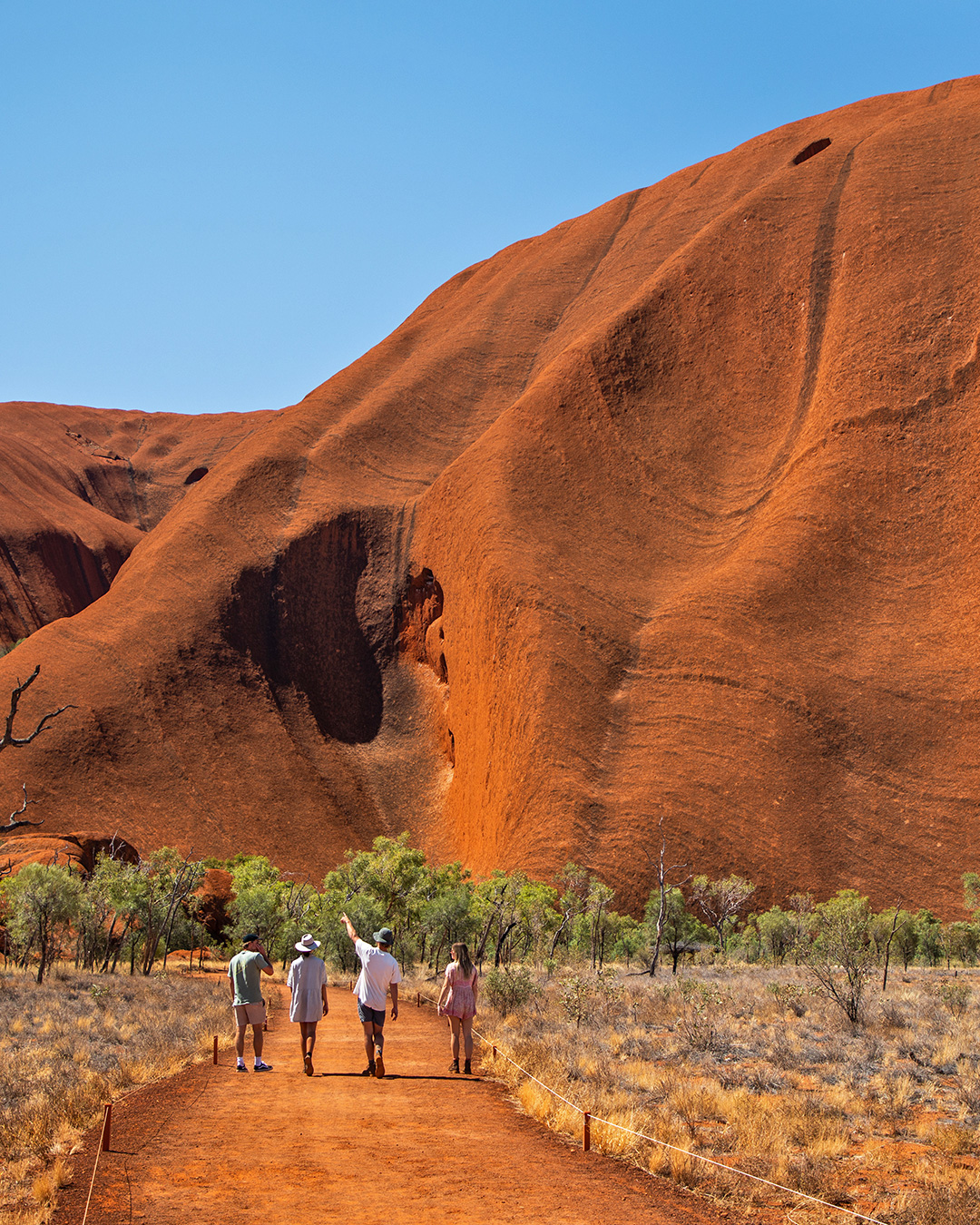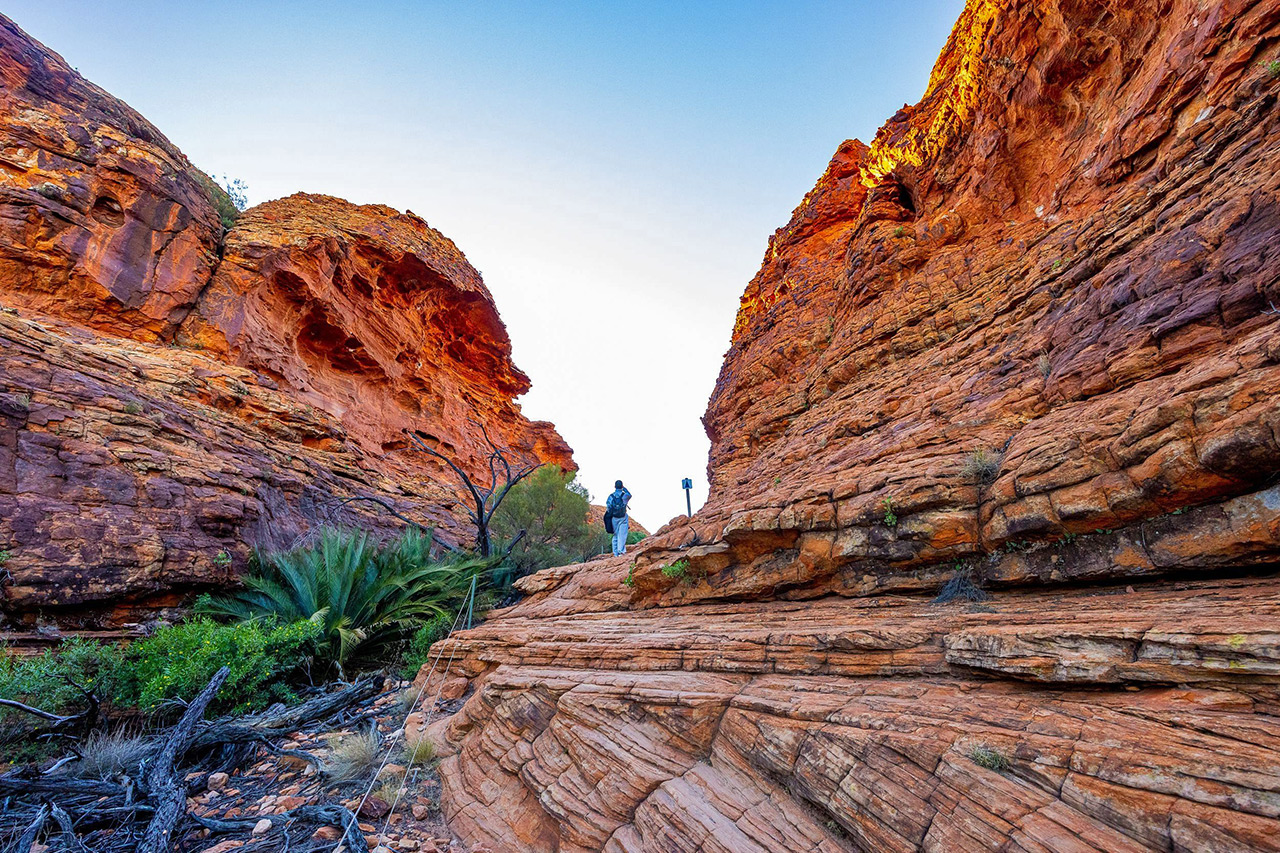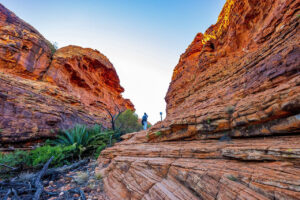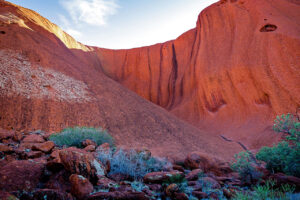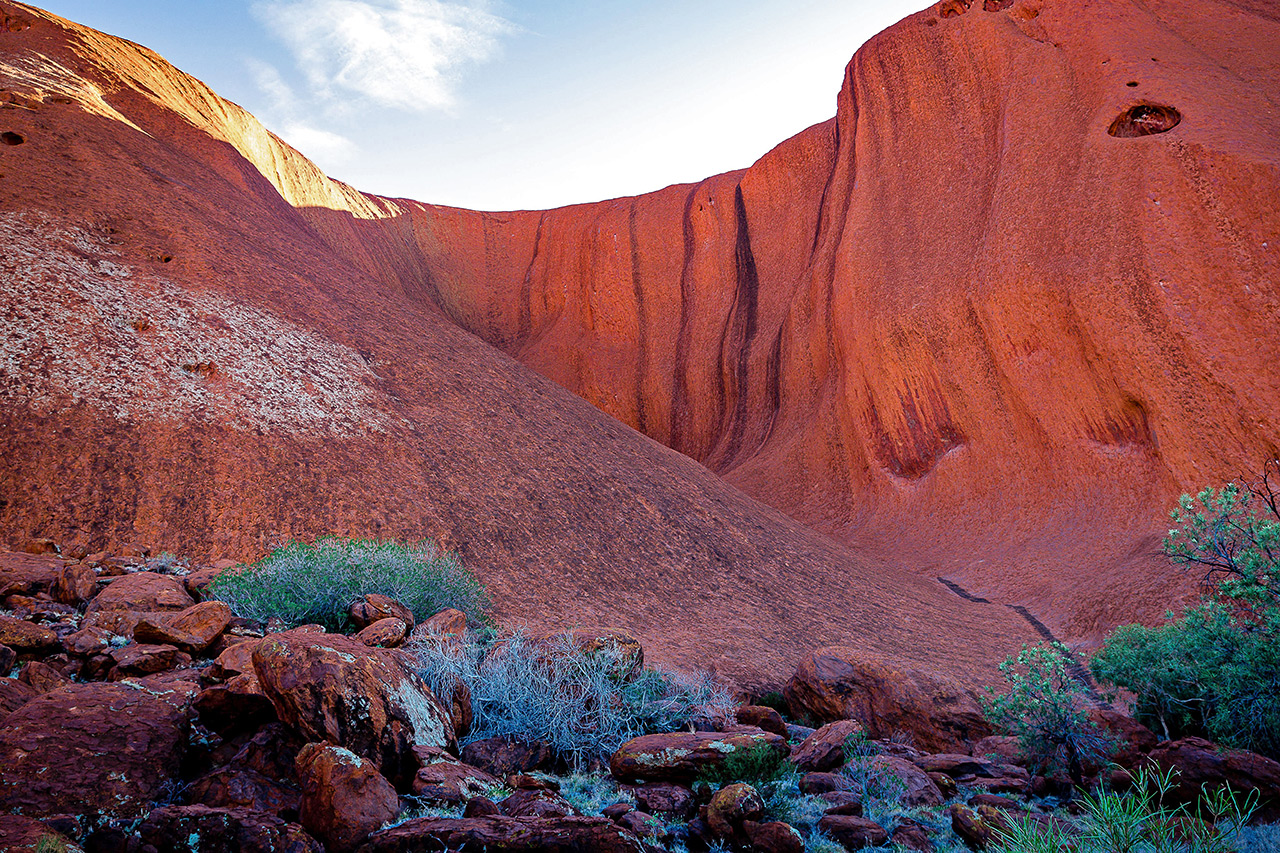Overview
Visit one of the greatest natural wonders of the world, Uluru. Not only is it a spectacular natural formation, Uluru is a deeply spiritual place. You can feel a powerful presence the moment you set eyes on it. At 348m high, Uluru is one of the world’s largest monoliths, towering over the surrounding landscape and some 550 million years old.
Made of sandstone, Uluru is often referred to as the heart of the ‘Red Centre’ and is one of Australia’s most recognisable landmarks. Breathe in, see the colours change before your eyes, hear the stories of time and be amazed as Uluru captures your heart. For the local Aboriginal people, the Anangu, World Heritage-listed Uluru-Kata Tjuta National Park holds a special cultural significance where earth and memories exist as one.
Feel the connection to the land as this iconic rock formation hides ancient wisdom and diverse plant and animal life. Discover an awe-inspiring landscape where creation stories are whispered on the winds. Choose to walk with a Traditional Owner, join a camel tour, self-drive or dine under a canopy of stars. There are more than 101 culturally appropriate activities to experience in the region.
Climate
-
Summer
Dec—Feb40°C Avg. High35°C Avg. Low -
Winter
Jun—Aug25°C Avg. High20°C Avg. Low
Places to go
Yulara
The township of Yulara supports Ayers Rock Resort where visitors to Uluru-Kata Tjuta National Park are accommodated. The resort features different levels of accommodation from hotel, apartment style, budget and camping. There’s a commercial centre and supermarket, bank, newsagent and food outlets.
Yulara also has a service station, a Royal Flying Doctor Service clinic, police station and fire service. Ayers Rock Airport, located a few kilometres from the resort, is linked by daily Qantas flights to Sydney, Melbourne, Perth, Cairns and Alice Springs. Ayers Rock Resort is an Aboriginal-owned enterprise offering a range of tours and cultural experiences.
Tips
- Yulara is the main accommodation hub for visitors to Uluru-Kata Tjuta National Park. Ensure you book your accommodation well in advance, especially during peak seasons, to secure your preferred option.
- Join a guided tour led by knowledgeable local guides. They can provide insights into the cultural significance, history, and geology of Uluru-Kata Tjuta National Park.
Kata Tjuta
Australia’s Red Centre is home to natural wonder and cultural landmark, Kata Tjuta (the Olgas). Hike around the soaring rock domes, which glow at sunrise and sunset. Located approximately 40km west of Uluru, the ochre-coloured shapes are an intriguing and mesmerising sight.
Choose from a number of walking trails that range from easy strolls to longer, more difficult tracks. At the end of the short walk to the Kata Tjuta dune viewing area you can sit and take in the magnificent panoramic view of the domes. The Walpa Gorge Walk is a rocky track that rises gently and passes rare plants and leads to a grove of spearwood. The longest of all trails at Kata Tjuta is the Valley of the Winds Walk – a moderately difficult track with breathtaking views. It is very steep in places, but the 7.4km circuit is worth the effort – it takes you between the domes, through creek beds and away from the crowds.
Meaning ‘many heads’, Kata Tjuta is sacred to the local Aboriginal Anangu people, who have inhabited the area for more than 22,000 years. It forms an important focus of their spiritual life. As a visitor you can join a cultural tour to learn some of the region’s sacred history and Dreamtime stories. Uluru–Kata Tjuta National Park is Aboriginal land and jointly managed by its Anangu traditional owners and Parks Australia. The park is recognised by UNESCO as a World Heritage Area for both its natural and cultural values.
Tips
- Choose sturdy, closed-toe shoes for walking and hiking around Kata Tjuta. The terrain can be uneven, rocky, and sometimes steep, so supportive footwear is essential for comfort and safety.
- Check with the visitor centre for any updates, trail closures, or important information before heading out to explore Kata Tjuta. Park rangers can provide valuable advice and assistance to ensure a safe an enjoyable visit.
Kings Canyon
Feel on top of the world as you walk along the towering red rock cliffs of Kings Canyon and take in views of the forest of palms below. Watarrka National Park is only three hours’ drive from Uluru, and is home to the mighty Kings Canyon – a majestic destination featuring 300m high sandstone walls, palm-filled crevices, and views that stretch across the desert. More than just a day trip destination, Watarrka National Park has a range of walking trails, 4×4 tracks, camel tours and accommodation options ranging from camping to resort-style rooms.
Tips
- If you plan on hiking, consider beginning your hike early in the day to avoid the heat and crowds. The Rim Walk is best enjoyed in the morning when temperatures are cooler.
- Be mindful of your safety while exploring Kings Canyon. Stay on marked trails, heed any warning signs, and avoid taking unnecessary risks, especially near cliff edges.
Tips & Suggestions
- Uluru is a sacred site to the Anangu people, the traditional owners of the land. Respect their culture, traditions, and spiritual beliefs by following all signage and guidelines, refrain from climbing Uluru, and respecting restricted areas.
- Consider visiting Uluru during the cooler months (April to September) when temperatures are milder.
- Witnessing the sunrise and sunset at Uluru is a must-do experience. Plan to arrive early to secure a good viewing spot and prepare to be amazed by the changing colours of the rock.
